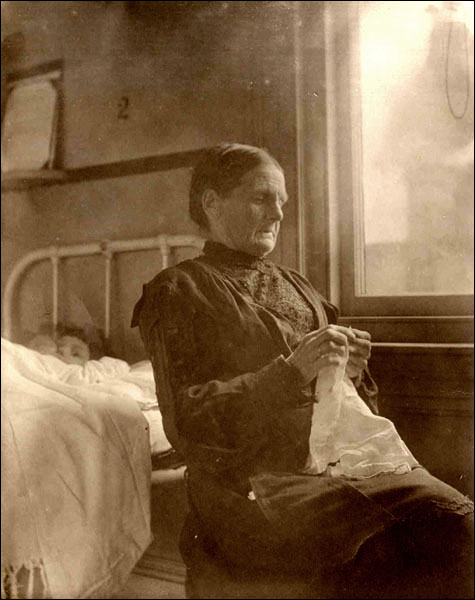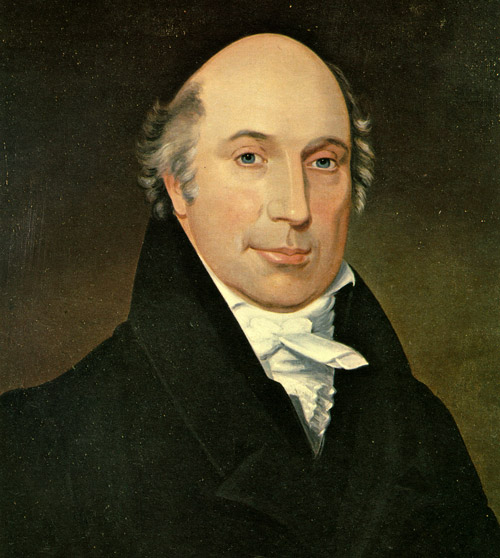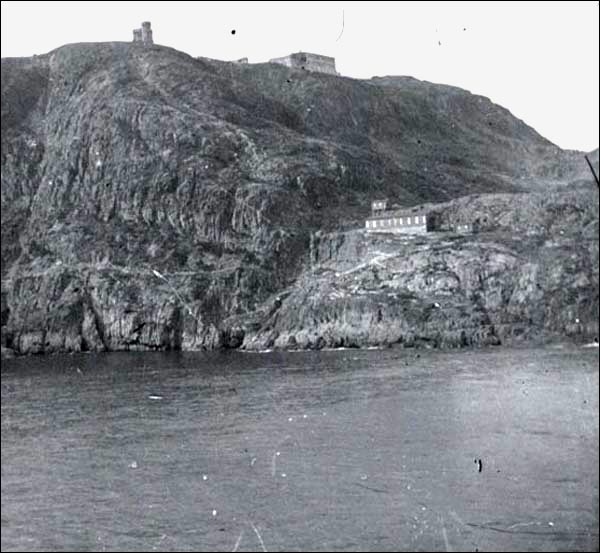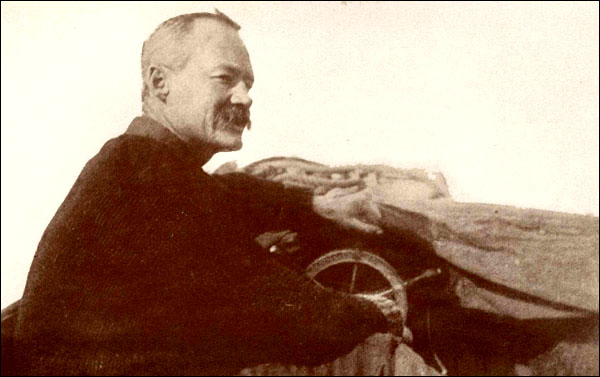19th-Century Health Care
Few health-care services existed in Newfoundland and Labrador at the start of the 19th century. Resident doctors were rare, especially outside St. John's, and the colony's only hospitals belonged to the British military. Physicians who did service outport communities had to travel long distances by snowshoe, horseback, or boat to examine patients who often could not afford to pay for treatment. Moravian missionaries also provided some health-care services in northern Labrador, but could only reach a small fraction of the region's scattered population.

As a result, professional medical care was sparse and inconsistent for many small settlements spread out along the coast. This helped contribute to Newfoundland and Labrador's high death rates and infant mortality rates, as well as to the spread of cholera, tuberculosis, smallpox and other infectious diseases
As public demand for better medical services escalated throughout the 19th century, government officials opened the colony's first civilian hospitals, set up boards of health in various communities, and established quarantine ports around the island. Visiting physicians also did much to improve local health services. Most notable among these were William Carson, who helped establish the first civilian hospital in St. John's, and Sir Wilfred Grenfell, who opened a string of hospitals and nursing stations in Labrador and northern Newfoundland.
St. John's Hospitals
Until 1814, the only hospitals in St. John's belonged to the British military. Infirmaries existed in the city's downtown at Fort Townshend, Fort William, and on Duke of York Street (today York Street). Although the institutions treated civilian patients, their priority was to care for military personnel. In 1805, the army opened a hospital between Government House and Fort William on Military Road. Widely known as the 'Pest House' and later the 'Old Garrison Hospital,' the building had a bed capacity of 10 and enough facilities to treat up to 31 patients; it also admitted civilians, but only when space allowed.
As the city's population continued to grow, however, it demanded better medical facilities. A large public movement, led by Scottish physician and reformer William Carson, successfully petitioned the government to establish a civilian hospital at St. John's in 1811. Before the year ended, Newfoundland and Labrador Governor John Duckworth appointed a committee, with Carson as its chairman, to design the new building and oversee its construction.

The Riverhead Hospital opened to the public on 7 May 1814 in what is today known as Victoria Park in downtown St. John's. Construction costs totaled £2,138, most of which committee members raised through public donations. During the first three months of its operation, the Riverhead admitted 40 patients, discharged 21, reported two deaths, and accommodated the remaining 17 in its wards.
Money, however, was a recurring problem for the hospital, which operated on public donations, government grants, and patient fees of 15 shillings per week. Unable to afford new services or properly maintain existing ones, the hospital eventually fell into disrepair. At the same time, the city's growing population placed increasing demands on the Riverhead, which hospital officials were unable to meet without compromising patient safety. As a result, individuals with non-contagious illnesses shared rooms with those suffering from fevers and other communicable diseases, while patients admitted for various mental illnesses were locked in basement cells where there was little heat and only straw beds to sleep on.
Appalled by these conditions, Dr. Harry Hunt Stabb lobbied government officials to open a new building for patients with mental illnesses. Planning for the facility began in the mid-1840s and the Hospital for Mental Diseases, today the Waterford Hospital, opened in December 1854. During the interim, the government transferred patients from the Riverhead's basement to a cottage it leased at Palk's Farm on Waterford Bridge Road.
The British Army, meanwhile, opened a new hospital on Forest Road in 1852 to replace its Military Road property, which had fallen into severe disrepair and was demolished shortly after the new facility opened. The Forest Road Hospital remained under military control until 1870, when Britain transferred its garrison from St. John's to Halifax. Upon its departure, the army handed over its hospital to the Newfoundland and Labrador government, which reopened the facility in 1871 as a civilian hospital. Initially known as the Forest Road or the Quidi Vidi Hospital, it became the General Hospital in 1880 and continued operating well into the 20th century.
The Riverhead, dilapidated and severely overcrowded, transferred most of its patients to the better-equipped Forest Road Hospital in 1871. It continued to accept fever patients until 1887, at which point the government opened a new Fever Hospital on Forest Road. Municipal officials declared the Riverhead a menace to public health in 1888 and ordered it burned to the ground.

Another facility, the Ross's Valley Hospital, opened on Signal Hill in the 1890s to isolate fever, smallpox, and epidemic patients from the general public. Its remote location, however, made it difficult to reach and the facility rarely received patients. Vacant and unused, the hospital fell into disrepair by the early 1900s and was destroyed by fire on 6 May 1911. Although police believed a group of young boys started the fire, they laid no charges and the facility was never rebuilt.
Island Communities
Locations outside of St. John's also possessed medical resources during the 19th century, although on a much smaller scale. Most large outport communities like Bonavista, Carbonear, Bay Roberts, and Twillingate had resident doctors for much of the 1800s. Many of these, like Dr. Mayne of Bonavista and Dr. William Fraser of Bay Roberts, were British or Irish physicians who settled in Newfoundland and Labrador during the late 18th or early 19th century.
It also became common for the children of outport doctors to study medicine in the United Kingdom or United States and then set up practice in or near their home communities. Many doctors often serviced numerous settlements and had to travel long distances by boat or horseback during the summer and by snowshoe or dogsled during the winter to reach their patients.
This was also the case for midwives, who were quite active in most Newfoundland and Labrador communities. These were usually elderly women, also known as 'granny' women, whose duties not only included delivering babies, but also curing colds, the flu, and other ailments. Most midwives were mothers who trained under an apprenticeship program with a senior midwife. Families sometimes gave midwives cash or vegetables for their services, but were often too poor to pay at all. The government also reimbursed some midwives for their work – in 1899, for example, Mary Tibbs received two dollars for delivering a baby (Nevitt, White Caps 24).
Although hospitals were rare outside St. John's, one briefly opened at Harbour Grace following a cholera outbreak in 1832. Fearing an epidemic, Conception Bay residents raised enough money to build the hospital on Carbonear Road at Harbour Grace. It closed shortly thereafter and operated as an army barracks until 1862. Professional help, however, was often costly or inaccessible in most Newfoundland and Labrador communities and many people relied on home remedies. These included goose grease for chest colds, partridgeberry jam for sore throats, cherry bark tea for diarrhea, and cod liver oil for the maintenance of general good health. The female head of each household was usually in charge of prescribing and administering domestic medicines and passed on her knowledge to any daughters.
Labrador
At the start of the 19th century, Labrador possessed even less medical resources than the island of Newfoundland. Aside from midwives, Moravian missionaries provided the region's only medical services for most of the century. Alongside supplying medicines imported from Britain and elsewhere, some missionaries also performed amputations and other emergency operations. Most, however, had no formal training in medicine and those who did could only reach a small portion of Labrador's widely dispersed population.
Although many Labrador people used a variety of folk remedies to cure illnesses and injuries, death rates from tuberculosis and other diseases were disconcertingly high. When British physician Wilfred Grenfell visited Labrador in 1892, he was shocked by the lack of medical attention residents of that area received. He began a fundraising campaign later that year, which allowed him to establish a hospital at Battle Harbour in 1893 and another at Indian Harbour in 1894.

As a result of Grenfell's work, other hospitals and nursing stations opened at St. Anthony (1901), Harrington Harbour (1906), Forteau (1908), and elsewhere in Labrador and northern Newfoundland. Experienced physicians and nurses from Britain and the United States frequently volunteered to work in these institutions and often traveled by dogsled, snowshoe, or boat to visit outlaying communities. In addition to its hospitals, the International Grenfell Association (IGA) also operated a series of medical ships to visit isolated coastal communities and deliver medical supplies or treat sick and injured patients.
The IGA continued to provide medical services in Newfoundland and Labrador until 1981, when it turned all of its nursing stations, hospitals, equipment and other medical resources over to the provincial government. Today, the Labrador-Grenfell Regional Health Authority provides health-care services in Labrador and northern Newfoundland.




